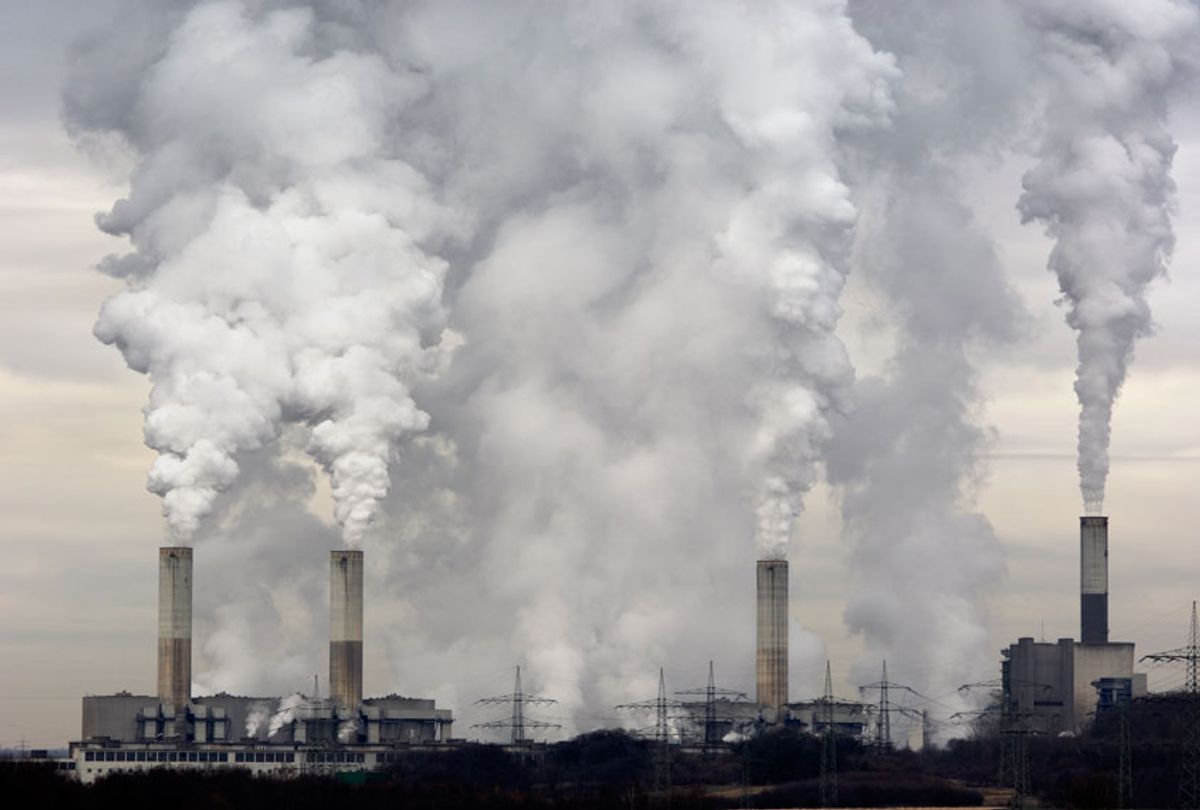New estimates on U.S. carbon emissions in 2018 show there is a lot more work to be done if there is any hope in meeting Paris Agreement targets, especially as the Environmental Protection Agency continues to rollback climate-related policies.
After three years of being on the decline, carbon dioxide (CO2) emissions increased by an estimated 3.4 percent last year, according to a report published on Tuesday by Rhodium Group based on emissions data from the Energy Information Administration (EIA). To put this data into perspective, this increase represents the second-largest annual gain in two decades. The first happened in 2010, when the economy recovered from the Great Recession.
Trevor Houser, a partner at the research firm, told the Guardian this signals the end of Obama-era climate policies. “The tailwinds of Obama administration policy are dissipating,” Houser said. “This year makes it abundantly clear that energy market trends alone – the low cost of natural gas, the increasing competitiveness of renewables – are not enough to deliver sustained declines in U.S. emissions.”
The trend might come as a surprise to some, considering coal plants continue to shut down despite President Donald Trump’s attempts to bring them back. In 2018, coal consumption dropped to 691 million short tons – a 4 percent decrease from 2017 – to reach the lowest point since 1979, according to the EIA. While this appears to be good news, power sector emissions overall increased by 1.9 percent, according to the estimates.
In addition to the power sector contributing to the rise, the transportation sector remains the largest contributor to U.S. emissions for the third year in a row. According to the report, the first nine months of 2018 yielded a meager 0.1 percent decline in demand for gasoline. However, a demand in growth for trucking increased the demand for diesel by 3.1 percent, while an increase in demand for air travel increased the demand for jet fuel by 3 percent.
“This highlights the challenges in decarbonizing the transportation sector beyond light-duty vehicles,” the reports states of the trend. “Here, we see efficiency improvements and electrification beginning to make a dent, albeit not nearly a big enough one to meet medium – and long-term U.S. emissions targets.”
In total, transportation emissions grew by 1 percent in 2018, the same growth rate as in 2017.
Elgie Holstein, Senior Director for Strategic Planning of the Environmental Defense Fund, tells Salon this report is a “sobering reminder” that, while scientists are warning the world to act quickly on climate change, the Trump administration is working trying to dismantle previously established safeguards.
“At a high level, we need federal action to put a price and limits on carbon pollution,” Holstein said. “We also need to protect and strengthen existing climate safeguards – like the Clean Power Plan to limit power plant emissions and Clean Car standards – which the Trump Administration has been relentlessly trying to roll back.”
As the report notes, there are “the forgotten sectors,” too, that are also responsible for the increase – the buildings and industry sectors, which are estimated to make up for largest emissions growth in 2018. In the buildings sector, the reports states emissions come from commercial and residential buildings, a result of fuel oil and natural gas from cooking and heating. Researchers of the report believe this is partly due to a colder winter in 2018 combined with population growth.
“While there have been modest improvements in the efficiency of oil and natural gas furnaces, it is not enough to offset the emissions impact of population growth and increased demand for heating and other non-electric building energy services,” the report explains.
Holstein says local governments need to invest in green infrastructure to combat this. “Finally, we need to encourage more cities and states to advance their own plans to cut emissions, accelerate federal clean energy technology R&D, and invest in green infrastructure and enlist more companies to join in the fight,” the director said.
If action is not taken, or a “major technological breakthrough” does not happen, the researchers behind the report expect the industrial sector to become “an increasingly large share of U.S. greenhouse gas emissions."
“We expect it to overtake power as the second leading source of emissions in California by 2020 and to become the leading source of emissions in Texas by 2022,” the report states.
Industrial growth and manufacturing was up, which led to the largest emissions gains in 2018 – 55 million metric tons.
Currently, the world is 1°C warmer than pre-industrial levels, thanks to human activity. The U.S. ranks number two on the list of the world's countries by CO2 emissions; China is first, and India is the third.
Last October, 91 scientists from 40 countries warned that urgent action must be taken to reduce the impact of rising global temperatures across the world, citing that a half degree could make a big difference in the future. For example, at a 1.5°C rise, global sea level rise could be 10 centimeters lower by the year 2100, compared with a predicted sea level at 2°C. The difference could also significantly lower the likelihood that the Arctic Ocean is without sea ice in the summer.
The Rhodium Group report states that, in order to meet the Paris Agreement targets by 2025, the U.S. “will need to reduce energy-related CO2 emissions by 2.6% on average over the next seven years — and faster if declines in other gasses do not keep pace.”
In other words, an unprecedented pace for the U.S. “It is certainly feasible, but will likely require a fairly significant change in policy in the very near future and/or extremely favorable market and technological conditions,” researchers concluded.

Shares